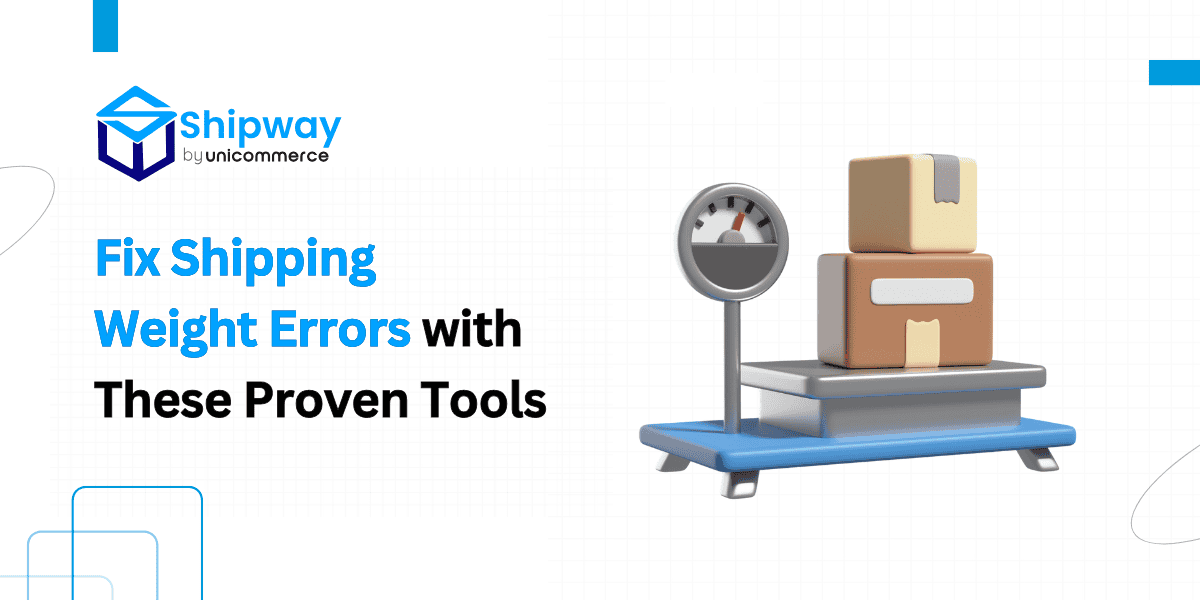If you run an ecommerce business, you already know how important it is to get the shipping weight right. The weight you record for your products doesn’t just affect shipping costs. Accurate weight details can help manage shipping costs and meet customer expectations.
This article explains what weight discrepancies are, the reasons for their occurrence and how to reduce them. The discussion covers tools and methods to achieve accurate weight measurements. So, let’s break this down together – what causes weight discrepancies, how you can prevent them, and the tools that can make your life a lot easier.
Understanding Weight Discrepancies
Weight discrepancies can happen when the recorded weight of a product does not match its actual weight. This mismatch may lead to unexpected shipping costs and certain types of customer complaints. In some cases, the difference can cause problems with shipping carriers or customs. So it is important to pinpoint causes and take steps to reduce these differences.
Major Causes of Weight Discrepancies
- Human Error: There are certain mistakes that happen during the manual measurement. They can further lead to inaccurate readings.
- Faulty Equipment: Sometimes, certain kinds of outdated instruments may give inconsistent results.
- Packaging Variations: In some cases, different packaging materials can affect the product’s weight.
- Environmental Conditions: Many times, slight changes in temperature or humidity may affect the performance of scales.
- Data Entry Mistakes: Errors that occur during the manual entry of weight details can give certain product weight discrepancies.
Tools to Measure and Track Weight
Several tools can help ensure that weight records are correct. The following sections outline the available instruments and software.
1. Types of Scales
There are below listed types of scales that online sellers can use:-
- Digital Scales: These scales give readings and are suitable for most products. They are easy to use and provide clear displays.
- Platform Scales: This is ideal for heavy packages. The reason is that these scales have large surfaces and can handle weight.
- Precision Scales: These are used for small, delicate items requiring detailed measurements.
- Industrial Scales: This is well suited for warehouses where these scales can manage bulk shipments and large packages.
2. Calibration Instruments
To maintain accuracy, calibration instruments are essential:
- Calibration Weights: Standard weights that are used to adjust scales. Regular calibration with these weights can reduce measurement errors.
- Electronic Calibration Tools: Some scales come with built-in calibration systems that adjust automatically.
- Manual Calibration Devices: In some cases, manual devices help check the accuracy of your scales periodically.
3. Automated Measurement Systems
- Conveyor Belt Weighers: These devices measure the weight of items as they move along a belt. It is useful for high-volume operations.
- Robotic Scales: Some systems use robotics to place large items. These systems can work around the clock and reduce manual handling.
- Integrated Software Solutions: Software that connects scales with your inventory or order management system can update weight data in real-time.
4. Weight Tracking Software
Software tools like Shipway can help manage and store weight data:
- Inventory Management Programs: These programs often come with modules to record weight data. They can update stock records automatically.
- Shipping Software: Some shipping systems have built-in features to check and track the weight of items. They can compare measured weights with stored data.
- Custom Databases: A tailored solution may be used to record weight details and track any discrepancies over time.
Using these tools can reduce errors and improve overall data accuracy. Choose the ones that best match your business needs and volume.
Techniques to Reduce Weight Discrepancies
Along with the right tools, specific methods help keep weight data accurate. The following techniques address both human and system-related issues.
1. Regular Calibration and Maintenance
Keeping equipment in good working order is key:
- Set a Schedule: Establish a routine calibration schedule for all scales. A weekly or monthly check can work well.
- Use Standard Weights: Always calibrate using known standard weights. This step helps spot any drift in measurement.
- Document Calibration Results: Record each calibration event.
- Perform Maintenance: For this, always clean scales regularly & check for any wear. Faulty components should be replaced quickly.
2. Employee Training
Well-trained staff can reduce mistakes:
- Measurement Procedures: Train employees on the correct use of scales. Show them how to place items and how to record data.
- Data Entry Protocols: You also need to explain the importance of entering the correct weight information.
- Regular Refresher Sessions: Provide some sort of periodic training sessions to keep staff updated on the best practices.
- Error Checking: Create a good work culture where employees check each other’s work for any kind of mistakes.
3. Standard Operating Procedures
Clear guidelines help reduce variation:
- Create Detailed Guides: Develop written instructions on how to measure, record, and verify weight.
- Implement Checklists: Use checklists for each measurement step.
- Assign Responsibilities: You need to make sure that every stage of the measurement process has a responsible person.
4. Quality Control Checks
Quality control can catch errors before they affect orders:
- Random Spot Checks: Randomly select shipments for review.
- Use Data to Identify Trends: You need to track any kind of discrepancies to see if a particular product or package type is more prone to errors or not.
5. Consistent Packaging Techniques
The way products are packaged can impact the recorded weight:
- Use Standard Packaging: Stick with one type of packaging for similar products.
- Weigh Packaging Materials: Know the weight of boxes and padding materials.
- Remove Extra Materials: Avoid unnecessary items that might add extra weight.
- Test Packings: Experiment with different methods and record the results to find the best solution.
Best Practices for Weight Management
Consistency is key when it comes to managing weight in ecommerce. The following practices can help keep weight records accurate.
1. Document Procedures
Write down all procedures related to weight measurement:
- Standard Guides: Create a manual that explains each step in the measurement process.
- Visual Aids: Use diagrams or photos to show the correct method of placing items on a scale.
- Access for All: Ensure that every team member has access to these guides and understands them well.
2. Regular Process Reviews
Examine your process often to see if changes are needed:
- Monthly Audits: Hold monthly reviews of weight data and procedures.
- Staff Feedback: Ask employees for their input on what might be improved.
- Update Guides: Change written procedures if new tools or techniques are introduced.
3. Use of Reliable Tools
Invest in quality instruments and software:
- High-Quality Scales: Purchase scales that have a good reputation for accuracy.
- Software Updates: Keep your weight tracking software up to date.
- Maintenance Contracts: Consider maintenance plans for your equipment to keep it working well.
4. Training and Support
Educate your team about every part of the process:
- Initial Training: When new staff join, provide training on weight measurement techniques.
- Ongoing Workshops: Hold regular sessions to review best practices.
- Support Materials: Create cheat sheets and quick guides for everyday reference.
Conclusion
Correct product weight measurement is a basic yet important part of running an online store. The tools and techniques presented here offer ways to improve accuracy. Your business can benefit from major issues like lowering the shipping costs, fewer customer complaints, and a more reliable system.
However, adopting the steps in this guide may require time and effort. Start by reviewing your current procedures. Use a few of the tools mentioned above and see which works best for your products and volume. In time, the changes you make will show in the consistency of your shipping data.
Remember that correct weight measurement is not a one-time task. It is an ongoing effort that needs regular attention. With proper tools, clear techniques, and dedicated staff, you can keep weight discrepancies to a minimum. And here’s where Shipway has your back. With Shipway, you can say goodbye to weight disputes; your shipping weight records stay consistent and accurate across systems. Plus, you’ll have dedicated Key Account Manager (KAM) support to guide you every step of the way.
You may also like…
Top 10 Logistics Companies in India for eCommerce (2025 List & Guide)
Introduction: Why Logistics Matters for India’s Growing eCommerce Sector The Indian eCommerce sector has witnessed tremendous growth, projected to...
read moreHow to Start an E-Commerce Delivery Franchise in India: Investment, Profit & Top Companies
Introduction: The Rise of eCommerce Delivery Franchises in India India’s eCommerce landscape is expanding at a record pace and with it, the demand...
read moreTop-Selling Products and Categories for Christmas and New Year 2025–2026 in India
For e-commerce sellers, Christmas and New Year mark the grand finale of the retail calendar, a season when festive emotions and purchase intent peak...
read more




